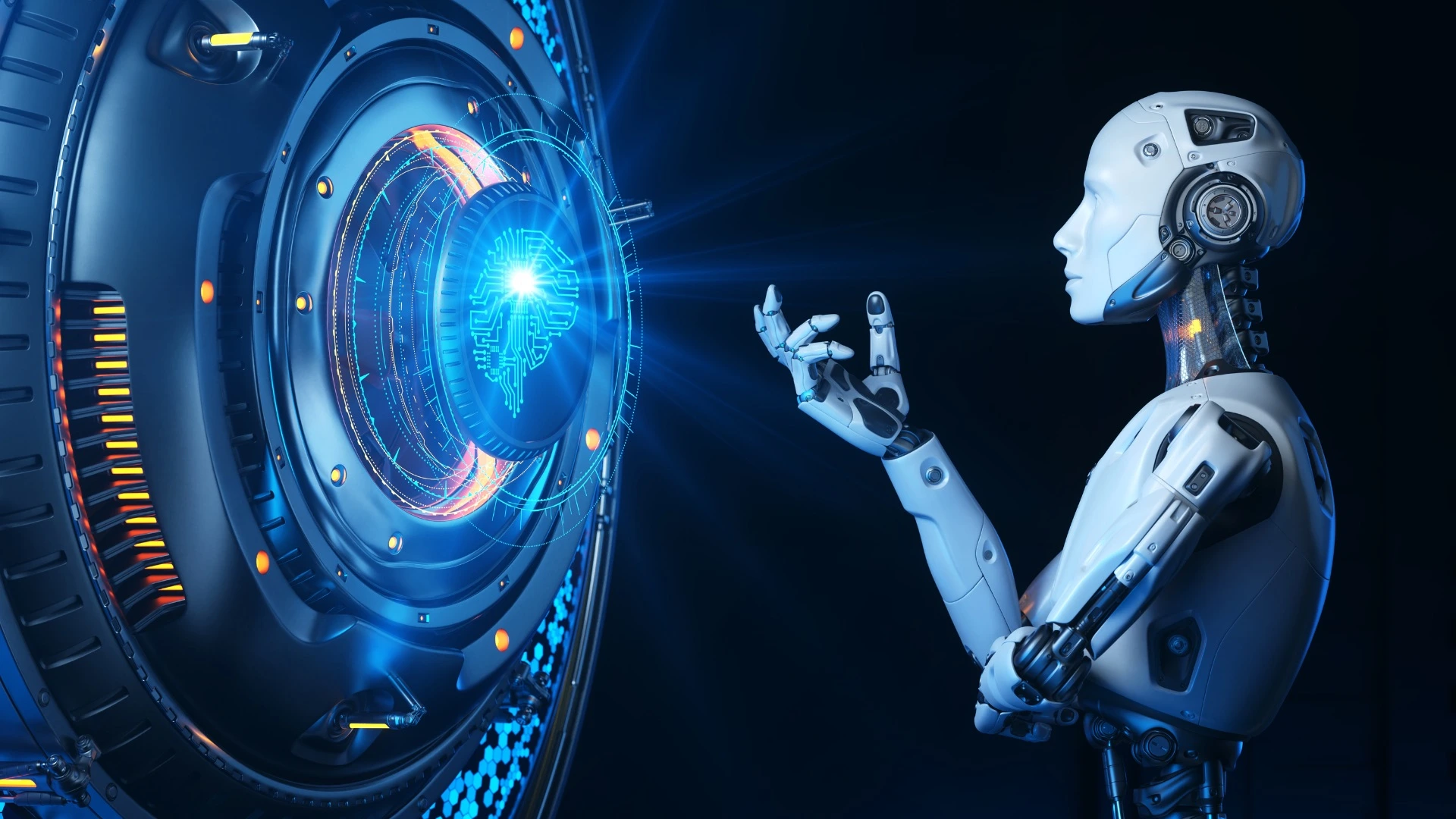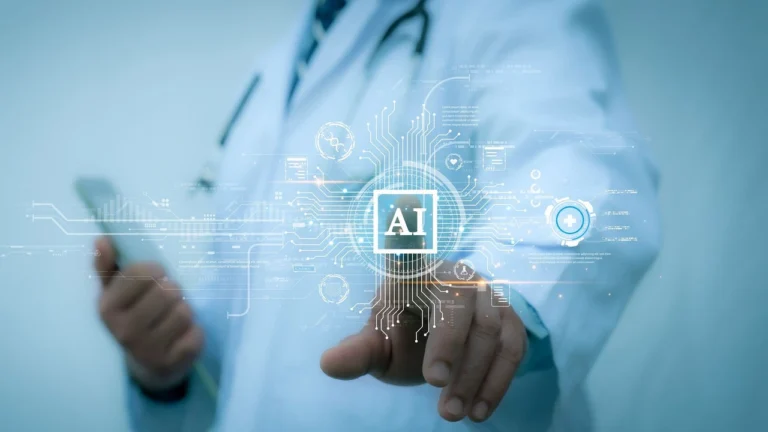When we talk about technology that will transform the future, artificial intelligence comes to the mind. But, it is important to understand what artificial intelligence is, and how does it work?
Artificial intelligence is a combination of technologies that allow computers and machines to perform human-like functions such as analysing data, making decisions, understanding and translating both spoken and written language and solving problems. Many disciplines, such as computer science, statistics, data analytics, software engineering, information technology, and programming languages are a part of this field.
In this blog, we will talk about the role of AI in technology, its history, types of artificial intelligence, how it is being used in our daily lives and how it works in the modern economy. So, let’s understand what AI is:
What is AI?
We know that AI is a field of computer science that focuses on creating software and machines that can perform human tasks more efficiently and quickly. However, it is necessary to know what AI actually is.
Artificial intelligence is a defining future technology that uses algorithms especially machine learning, deep learning, and natural language processing to perform complex tasks. These include examining large sets of data, identifying patterns, making accurate predictions and understanding language.
But, a common question we face is how artificial intelligence was developed. Let’s take a look at its history:
A brief history of artificial intelligence
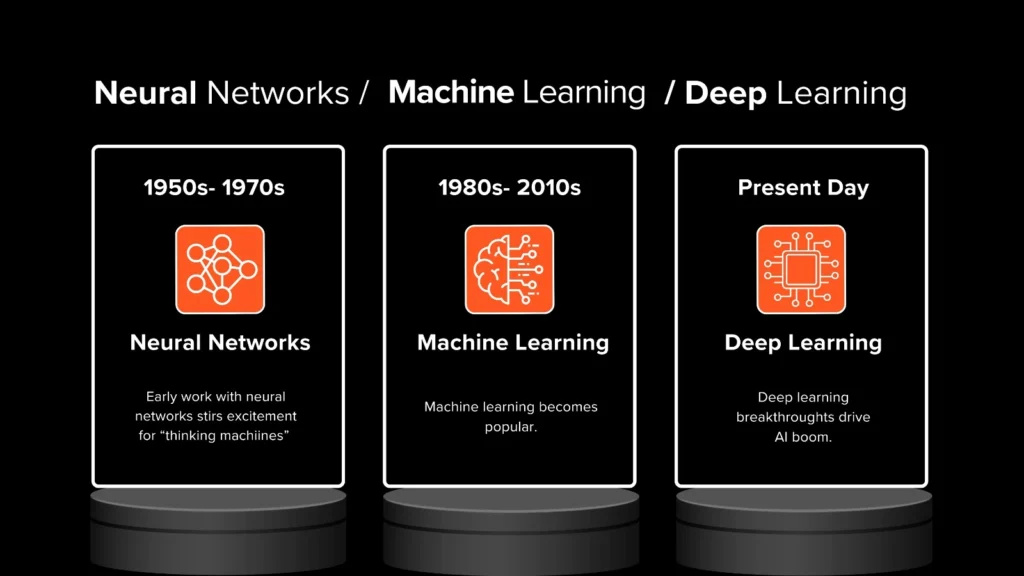
To talk about the history of artificial intelligence, we would have to go back to the mid-90s. Here is an explanation of each stage:
1950s -1970s:
The word “Artificial Intelligence” was first introduced in 1956. In the 1950’s scientists had already started researching how computers can solve simple human problems. This is where neural networks came to be and it was the first step to make computers smarter. By 1960, the U.S. Department of Defence began working on the basic structure of AI that could work and think like a human.
1980s – 2010:
After making computers smarter and more efficient than before, machine learning became popular. Computers analysed data and made predictions without humans giving them written instructions or codes. This also taught computers to make decisions on their own.
After some time, DARPA (The Defence Advanced Research Projects Agency) was able to use AI in military projects and also create small virtual assistants.
Present day:
Today, we have advanced algorithms used in AI such as deep learning. This is a part of machine learning that uses special networks to assess information, look for connections between data and form conclusions both positive and negative. With the help of this technology in AI, voice recognition, processing of images and self-driving systems have become famous.
Advantages & disadvantages of using AI
AI is not the perfect technology, just like any machine or software. It has both advantages and disadvantages. Down below are the main benefits and drawbacks of using AI:
| Advantages | Disadvantages |
|---|---|
The risk of human error is reduced when you use AI, especially in the fields of engineering and healthcare. | AI systems can give biased and false information if they are trained on biased data or given inaccurate data. |
| It can examine large sets of data, analyse them thoroughly and make the right predictions which is helpful in business | Creating and setting up AI systems for business and marketing can be expensive. |
| AI can perform repetitive tasks easily and accurately, which can be hard for humans. | Many ethical concerns are raised around AI because of privacy, security and control issues. |
| It is an important part of innovation and can create new technologies, products and services that were not possible before. | Humans will lose their ability to think creatively and critically because of over-reliance on AI technology. |
Types of artificial intelligence
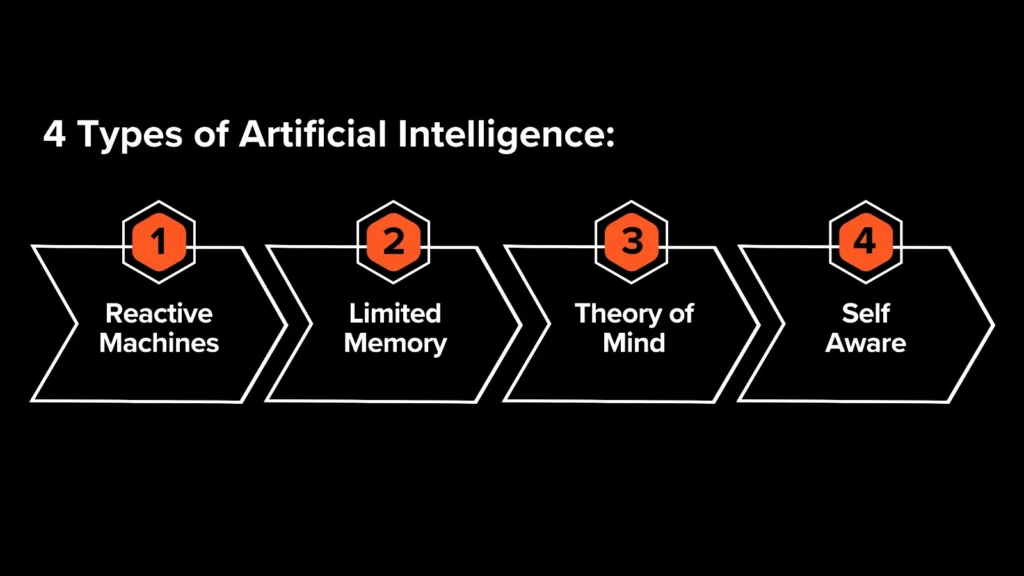
Artificial intelligence can be explained in four main concepts, depending on the activities being performed or the level of development. Here are the four stages of AI that you should know about:
- Reactive machines
Just like its name, these AI machines can only react to data that is given to them right at the moment or react to the input whose rules were established earlier. It has the simplest structure and has no memory, which means it can not store any output.
Since it cannot store any information, it can not analyse data based on past experiences. However, this machine is only helpful if you want to get simple results from repetitive tasks. A good example of a reactive machine is IBM’s chess-playing computer, Deep Blue.
- Limited memory
The limited memory AI is trained on fresh data continuously. When there is a change in the model, it automatically renews itself and creates itself according to the new revisions. However, it can store information and analyse data to make predictions and observations as compared to reactive machines.
Limited memory technology is mostly used in business, climate and education. One example of limited memory technology is chatbots, which use data that has already been programmed to talk to customers and give accurate predictions.
- Theory of mind
Theory of mind technologies do not exist yet as they are more advanced than limited memory technologies. Although this AI model is being created to store information and make observations, its main focus is for the technology to understand human emotions and respond to them accordingly.
As the research is still going on, AI can understand our requests but cannot respond to humans in an emotional manner.
- Self-aware
The self-aware AI technology only exists in science and stories as it is too advanced to be created yet. In theory, this model of AI stores information, examines data, makes decisions, and is also a self-aware machine that has emotions similar to a human.
Although scientists and researchers are still working on it, there is still a long time to have AI technology that has both emotional awareness and consciousness.
What technology is used in AI?
The history of AI tells us that it is not a new concept. However, the advancement in technology has allowed AI to perform more complex tasks and show human-like intelligence. Machine learning helps computer systems learn from data, and natural language processing helps machines understand human language, but that is not all that AI has. So, what are some other technologies used in AI?
Computer Vision: Computer vision technology lets AI analyse, understand and interpret visual information and data, such as images and videos. Both of these technologies are combined and used for medical imaging, facial recognition or identifying an object.
GPUs: Graphical processing units are the most important technology that is used in AI. It allows AI to perform millions of calculations within seconds and lets the system respond to the user immediately. This is also known as interactive processing. Hence, these units give AI the computer power to handle large and complex data.
Fast Data Processing: New algorithms are used in AI technology that let it analyse data on different levels faster and more intelligently. This helps AI make predictions about rare events quicker and better than others.
Application Programming: Application programming interfaces are very useful in AI technology. They allow the functions of AI to be added to other computer software so that they can analyse and understand data like AI and identify patterns in the same way.
The Internet Of Things: AI works on a lot of data which has been made easy to access with the increase in technology. Technologies like The Internet Of Things makes large amounts of data through connected devices. This allows AI to function well and provide proper observations based on the data.
Want AI solutions for your company?
From chatbots to automation & predictive analytics, we help businesses get the most out of AI.
Boost efficiency. Reduce costs.
Book a ConsultationHow does AI work?
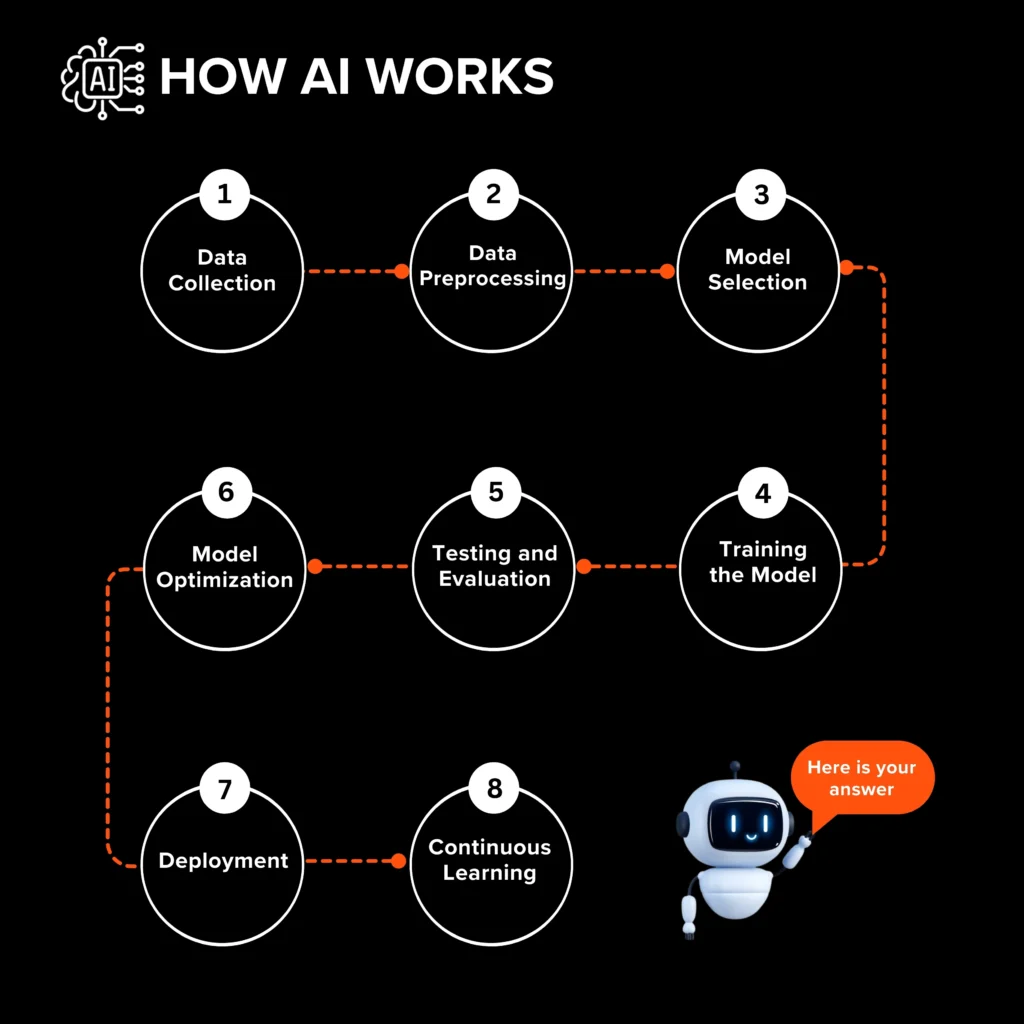
- Data collection
The first step begins with the collection of data. AI gathers data that can either be broad such as ChatGPT’s data, or specific (like healthcare data for medical AI) depending on the tool or app you want to make. It is important to remember that the quality and size of the data determine how good or bad the AI will perform afterward.
- Preparing the data
After the data is collected, it is cleaned and organised so that it can make accurate predictions after analysing it. This process includes:
- Getting rid of duplicate data, false entries or errors.
- Labelling images and videos
- Organising the format of data so that it can be understood by AI.
- Model selection
In the third step, engineers select a model based on the goal they want to achieve. Here are the four models that are used in AI technology:
- Supervised Learning:
This model works for data that is clearly labelled so that AI can understand each data point and use that information to make the right output. The data is labelled by humans like engineers that are making the AI tool.
Example: Predicting the price of houses, facial recognition.
- Unsupervised Learning:
This model works without labelled data and creates the output on its own. It does not rely on human-labelled information to identify hidden patterns and structures.
Example: Customer segmentation, fraud segmentation.
- Reinforcement Learning
This AI model interacts with the environment, takes action and then learns from it. It can also be called a trial-error method that is used by the reinforcement learning model. However, it is mostly used in gaming, robotics and trading where AI models need to learn from interaction.
Example: AI games – AlphaGo and warehouse robots.
- Deep Learning
This model uses artificial neural networks to analyse the data and make predictions. These networks are made up of many layers, and information is collected from each layer as data passes through it.
Example: ChatGPT and Voice assistants
- Training the model
After the right model is selected, the engineers divide the data into two parts. One part is used to train the model to identify patterns and make predictions while the other part is tested to see how well the model works with the data that has been collected.
- Testing & ealuation
After training, it is examined thoroughly to identify any areas of improvement. The engineers check to see how accurate and detailed the outputs are. If any errors are found, then the model is revised.
- Model optimisation
If the model does not work well or gives the wrong outputs, then it is fixed by taking measures like:
- Cleaning the data, expanding it or narrowing it to specific topics.
- Changing the AI model.
- Removing false or inaccurate data that can give biased results.
- Deployment
When it is finally prepared, it is released to the public in the form of an app, software or a device. For instance, an AI chatbot might be added to a brand’s customer service page.
- Continuous learning
AI models are not trained once and left alone. They are improved continuously by feeding them new information so that their outputs can be better and more accurate than before. Many AI technologies and software collect feedback from users so that they can improve their models.
How are global companies using AI?
It is nothing new that companies have been using AI technology to improve their outputs and efficiency. However, the most use of AI by businesses is for customer service. According to Forbes, 56% of the companies use AI for customer services. So, let’s see some statistics that tell us how global companies are using AI:
| Business Area | Use %age |
|---|---|
| Customer Service | 56% |
| Cybersecurity | 51% |
| Digital Assistants | 47% |
| Customer Relationship Management | 46% |
| Inventory Management | 40% |
| Content Creation | 35% |
| Product Recommendations | 33% |
| Accounting | 30% |
| Recruitment | 26% |
How much is AI being used by region?
If we talk about how much AI is being used in different countries in different regions as of 2024, then India comes at the top of the list. Down below is a table that shows how much AI is being used and explored globally:
Source: IBM
| Country | Adoption Rate | Exploration rate |
|---|---|---|
| India | 59% | 27% |
| United Arab Emirates | 58% | 32% |
| Singapore | 53% | 41% |
| China | 50% | 36% |
| Latin America | 47% | 34% |
| South Korea | 40% | 48% |
| UK | 37% | 41% |
| Canada | 37% | 48% |
| Italy | 36% | 38% |
| US | 33% | 38% |
| Germany | 32% | 44% |
AI market in the future
If we look back to 2017, then only 20% of companies have adopted AI. However, the rate rapidly increased from 2022 to 2024. AS of 2024, 725 companies are using AI in their business.
Overall, in the future, the AI market is set to grow to 1.85 trillion by 2030. Large companies will use AI technology more than small companies to cut their losses and increase efficiency.
Conclusion
AI has completely changed the way we view and see the world both in our professional and personal lives. Many companies are using AI technology to improve their operations, connect with other businesses, and increase their efficiency. However, this technology is not just being used for growth, but also to reduce costs. As companies and organisations will look to reduce their expenses and increase their outputs, the popularity of AI tools will keep growing. Additionally, it is a good choice for businesses who want to save time and improve their workflow.
However, it is important not to turn our faces away from some of the disadvantages of AI, such as false information and deepfake content. Hence, it is necessary to keep the benefits and disadvantages of AI in mind, while using it.
Read More: Can ChatGPT do keyword research
Frequently Asked Questions
- AI Chatbots like ChatGPT, Gemini, Grok, and Claude
- Personal AI assistants like Alexa and Siri
- Self-driving cars
- Wearable sensors and devices
- TikTok and Snapchat filters
